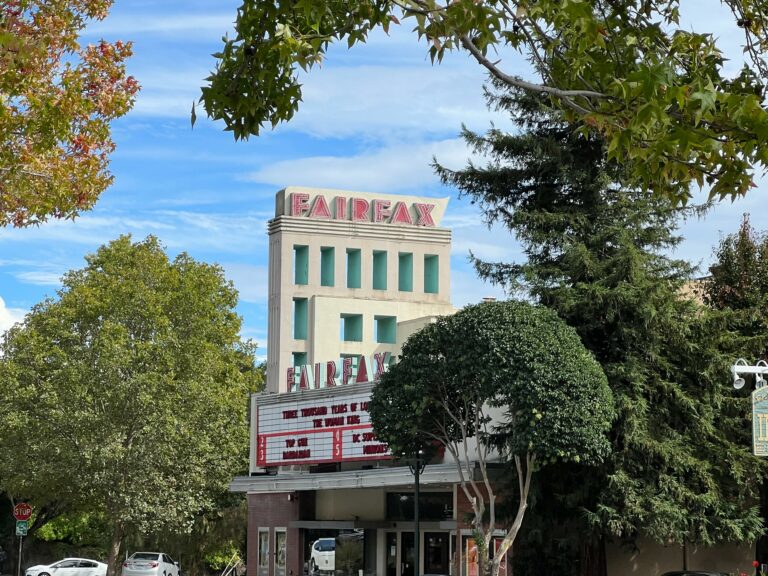Marin’s chronic housing shortage combined with rising inflation has pushed the rental market to a breaking point. Nowhere is that more evident than in the showdown taking place in Fairfax between renters, landlords and the town council.
The conflict began in November, when the progressive Fairfax Town Council passed two ordinances to protect renters, who account for 37% of the town’s households. Since then, verbal battles have played out during prolonged public comment periods at council meetings. It’s gotten downright disagreeable at times.
Although the council discussed, debated and negotiated the renter protections for eight months at public meetings prior to approving the ordinances, landlords are now demanding that both be repealed. One caps annual rent increases and the other provides strong measures to prevent arbitrary evictions, commonly known as a “just cause” eviction ordinance.
Landlords have leveled a variety of claims against the council members for voting in the ordinances. Elected officials failed to notify property owners that they were considering renter protections, they overreached their authority as a council and they have caused economic and unintended consequences, according to statements made by landlords at council meetings.
“There’s nothing in those ordinances that I would accept,” Philip Salaverry, owner of a Fairfax duplex, told the Pacific Sun. “The two ordinances combined are 36 pages long, and all of it is terrible for the housing provider.”
The town’s rent stabilization policy limits annual rent increases to an amount equal to 60% of the local CPI or 5%, whichever is lower. The cap is substantially lower than the maximum 10% annual rent increase allowed on units covered by current state law.
Salaverry, a retiree who lives on one side of his duplex, said he had leased the other half to long-term tenants for the past 15 years, never raising the rent more than 2% annually. But the financial risks are too great due to the ordinances, he said, which forced him to remove the unit from the residential market. It will soon be converted into a vacation rental that he will list on Airbnb.
In February, Salaverry co-founded Marin Residents, a political action committee (PAC), to fight the ordinances and educate property owners about rent control and housing issues. The group, which he said is grassroots, was responsible for gathering the 25 signatures necessary to place the issue of repealing the two ordinances on the town council agenda for April 5.
A robust crowd attended the council meeting, with dozens of people commenting during the almost three and a half hours of discussion about the renter protections. In the end, council members declined to bring the requested repeal to a vote. Instead, they voted unanimously to form a subcommittee with the mayor and vice mayor to review the ordinances.
Fairfax’s just cause eviction ordinance appears to be more controversial. Aimed at preventing landlords from evicting renters arbitrarily to benefit from increased rents for future tenants, the ordinance requires property owners to pay punitive damages for violations. It also applies to a broader range of rental dwellings than state law.
The town has scheduled a just cause eviction ordinance workshop, led by an independent facilitator, for May 6. The goal is to involve key stakeholders in a productive conversation about revising the ordinance to make it acceptable to both renters and landlords.
Renters support the workshop, according to Curt Ries, co-chair of the Marin Democratic Socialists of America, the group behind the push for renter protections. However, Ries doesn’t believe that the opposition is willing to come to the table in good faith.
“Most of them are not serious about revising the current ordinances,” Ries said. “The ordinances are very good, very strong. There are minor, but substantive revisions that can be made to address the more reasonable concerns stated by landlords.”
The landlords are crying foul. Michael Sexton, a Fairfax landlord and the other founder of Marin Residents, remains dissatisfied with the council’s actions, or lack thereof. He finds the workshop especially frustrating because it won’t address the rent control ordinance.
“It’s only dealing with half of the ordinances,” said Sexton. “The workshop would have been great eight months ago, but it’s way too little, way too late.”
The town received far more correspondence about the just cause eviction ordinance than rent stabilization, and the concerns were more substantive, Fairfax Mayor Chance Cutrano told the Pacific Sun. The workshop is the most expedient way to reconsider the elements of the just cause ordinance and determine what needs to be mitigated, he explained.
“At this time, the council is only holding a workshop on the just cause eviction ordinance,” Cutrano said.
However, opponents to the ordinances have a Plan B. Keep Fairfax Fair, a PAC established by Marin realtor Michael Burke, is circulating a petition to repeal the rent control and just cause eviction ordinances through a ballot measure.
A total of 588 signatures from registered Fairfax voters must be gathered to place the issue on the ballot, likely in 2024. About 300 signatures were gathered in the first week, Burke told the Pacific Sun.
Burke, whose website states he “specializes in apartment building investments” said his organization wants to rescind the ordinances because property owners had no input.
While renters have speculated that big money is behind Keep Fairfax Fair, Burke denied it. Current donors are mostly medium-sized apartment complexes in Fairfax, he said. To date, no large organizations, such as the Marin Association of Realtors and the California Apartment Association, have made monetary donations, according to Burke.
Sexton and Salaverry of Marin Residents also said they haven’t received donations from these associations. Still, the group has raised enough money for an ongoing cable television advertising campaign opposing rent control.
Marin Residents and Keep Fairfax Fair don’t rule out that large groups with deep pockets may become involved, especially if the groups are successful in getting their issue on the ballot. In accordance with state campaign finance laws, the PACs will need to disclose their donors in the future.
If the groups gather the requisite number of petition signatures, voters will decide whether to rescind the ordinances. Cutrano is concerned about the possibility of a ballot measure.
“We can continually amend ordinances,” Cutrano said. “That’s the great part about working with an ordinance. You can tweak them as they unfold, and you see how they work in the real world.”
Conversely, ballot measures cannot be revised. The only method to make changes would be another ballot measure in a future election.
Cutrano maintains that the rent control and just cause eviction ordinances are necessary, allowing people with lower incomes, such as artists, musicians, seniors and young families, to remain in Fairfax. The workshop is the most expedient way to reconsider the elements of the just cause ordinance and determine what needs to be mitigated, he explained.
“Fairfax is charming, and we want to protect it,” Cutrano said. “Given the crises that we’re facing—the legacy of fighting against building housing, the lack of funds to create affordable housing, the increasing costs of construction and the rent burdens—the council wants to support our community members.”
























